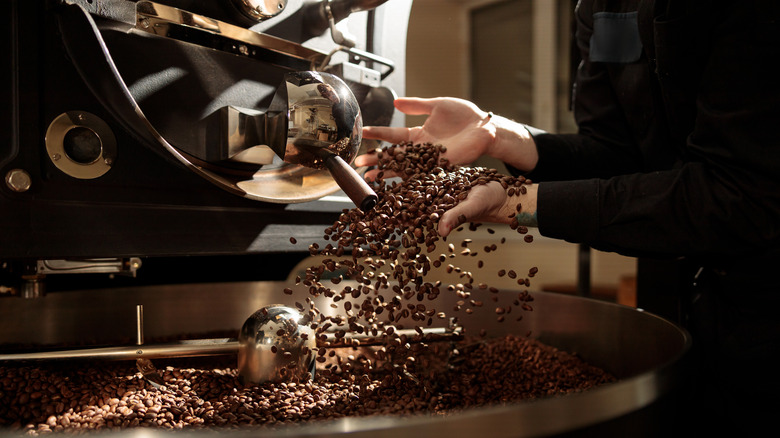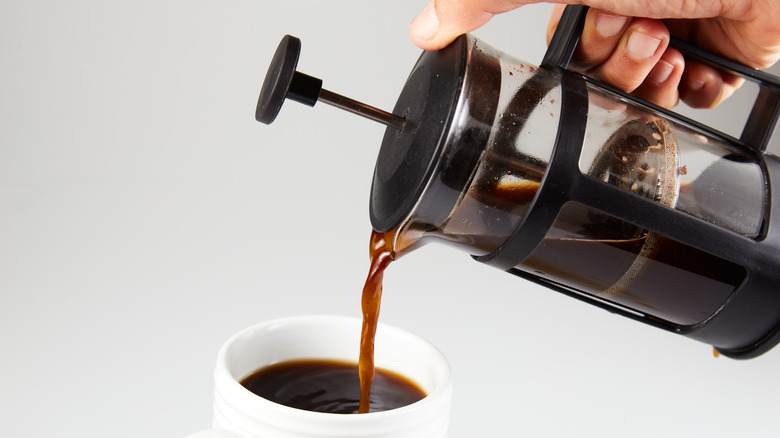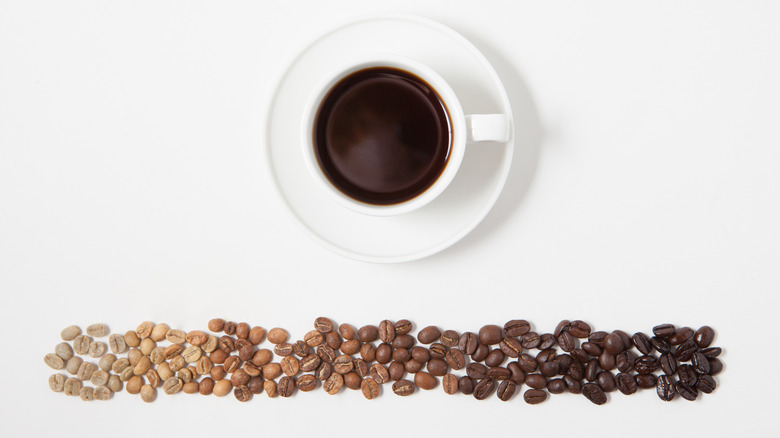What Makes High Roast Coffee Unique?
Coffee has bubbled and brewed across the globe for centuries, but the modern world of java takes things to a whole new level. The complexity of "coffee culture" comes with its own vocabulary, including at least 80 slang terms and synonyms identified by Coffee Affection. But that's only scratching the surface considering regional customs, historical techniques, and coffee-industry lingo such as "first crack," "peaberry," and "micro lot coffee."
Is delving into this caffeinated rabbit hole worth the effort? You bet it is — especially when exploring the ever-intriguing ritual of coffee-bean roasting. That's where "high roast" coffee and its enchanting counterparts enter the conversation.
The general public typically recognizes four levels of bean roasts: light, medium, medium-dark, and dark, per the National Coffee Association (NCA). But nuances abound, each defining that warm, aromatic liquid in your daily cup. Here's a look at just one of those subtleties, high roast coffee, and what makes it so unique.
High roast coffee is bold, smoky, and sweet
Technique gets a lot of fanfare when pulling an espresso or perfecting a barista-level pour-over. But the ideal cup of coffee begins well before the beans get crushed and ground in your kitchen or local coffee shop. The roasting process is what truly creates the flavor, depth, and aroma of the coffee, and the amount of time those beans spend in a roaster is the defining element. According to Coffee Affection, the length of exposure to heat, and the intensity of that heat, determines characteristics such as body, acidity, color, and distinct flavor variations.
The four roasting-level designations come from the temperatures at which coffee beans get roasted, states the National Coffee Association. The higher the temps, the "higher" the roast, a category generally known as the "dark roast." Other names for high/dark roasted beans include Italian, French, continental, espresso, European, Viennese, and New Orleans. Two things that make this type of coffee unique are the deep flavor intensity and the "second crack" timing that pulls out that flavor.
Dark roasted, aka high roast, coffee beans bear a shiny surface due to oils being drawn out by lengthy roasting (via Copper Moon Coffee). The flavors are deep, bold, and full-bodied, with low acidity and sometimes smoky flavors, especially with a French roast (via the NCA). High roast coffee can also be sweeter than other roasts because the longer roasting and high temps give natural bean sugars plenty of time to reach caramelization.
After the second crack comes the high roast
It's easy to imagine coffee beans slowly roasting, gently turning from virgin green to golden, progressing to earthy sienna brown, and finally to the deep, dark, near-black hues of high-roasted beans. But the process isn't exactly gentle, especially as the beans get hotter and hotter, resulting in the "first crack" and "second crack" roasting stages. It's after the second crack that you get the special dark/high roast beans.
Light-roast beans generally reach an internal temperature between 356 F and 401 F, just after the first "crack" in which the beans expand (via Coffee Affection). Things progress quickly from that point, and the roasting expert can pull them out at any stage as the temps increase. At the medium-dark roasting stage, a second crack occurs around 437 F to 446 F. Finally, the sweet and smoky dark/high beans result from increasing heat, landing between 464 F and 482 F.
If the beans don't come out after that point, they're considered burnt — and you'll know it. Bean & Bean describes the taste as bitter and harsh and notes that burnt coffee could harbor the acrylamide chemical that's potentially carcinogenic. So find the sweet spot after that second crack, then kick back and enjoy the high roast coffee experience.


